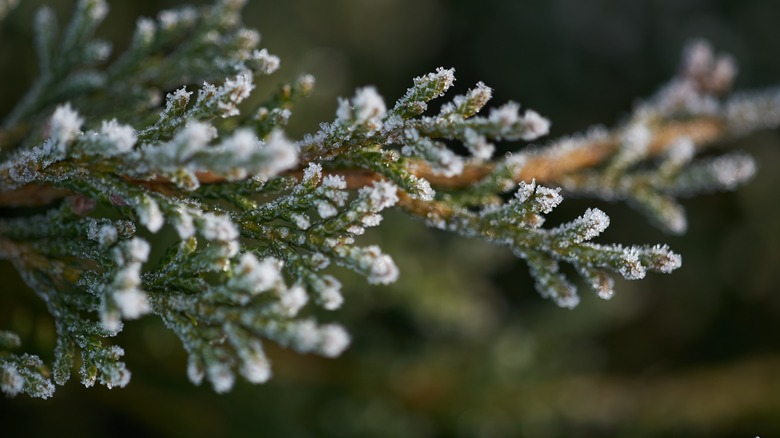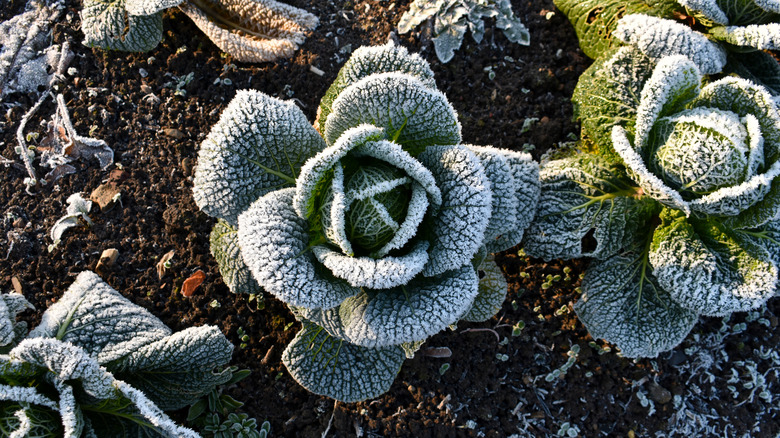How To Find The First Frost Date For Your Garden Where You Live
Have you ever woken up to icy covering on your lawn that you didn't see coming? If you're unaware of your local first frost date, you may be pleasantly surprised by this snow-like coating; however, it's not as harmless as it may seem. Frosts happen when temperatures drop, and water vapor from the air forms ice crystals on the ground. The first frost of the season can present a problem for flower beds and vegetable gardens, as it signals the beginning of colder temperatures and harder soil. It also signifies the start of the snowy season for regions that experience it.
While some outdoor plants thrive during winter weather, many others do not. You can lose your plants if they're underprepared for freezing temperatures, precipitation, and hard, dry soil. Knowing when to expect the first frost of the season will help you to get ahead of the curve and protect your garden.
How to find your first frost date
"The Old Farmer's Almanac" is a must-read for every gardener, regardless of skill level. It is packed with agricultural and seasonal information that is updated annually. While the Almanac states that it cannot guarantee complete accuracy, it uses data from years past to best predict the date of the first and last frosts. You can get a physical copy of the Almanac to find your local frost dates. Alternatively, you can enter your zip code online to receive the same information. Using the Almanac is one of the easiest ways to predict the first frost date well before it happens.
The National Weather Service also tracks and predicts typical frost dates. It provides a map with a 10-day range of typical frost dates. The maps let you see what regions will receive frost and when it's likely to occur. You can use the map as a guide to help you better prepare your garden and lawn for harsh winter conditions. Typically, the northern regions of the country will
How to prepare for the first frost date
For some plants, weather protection may be as simple as relocating a pot; for others, you may need to lay out mulch or frost blankets for insulation. Anything larger or structured, like tents, will take time to set up. Being able to construct them early prevents a last-minute scramble to cover icy flowers.
Your first frost date will also help you judge when to plant winter-blooming or early spring-blooming crops and flowers. Most plants need warm and moist soil to establish. When the ground hardens and cools, it's difficult for plants to root and grow — so you won't get the winter vegetables or early spring flowers you were expecting. Depending on what you intend to grow, you may need to plant seeds or starter plants at least six to eight weeks before the expected first frost. So, the sooner you know your region's predicted frost date, the better.


